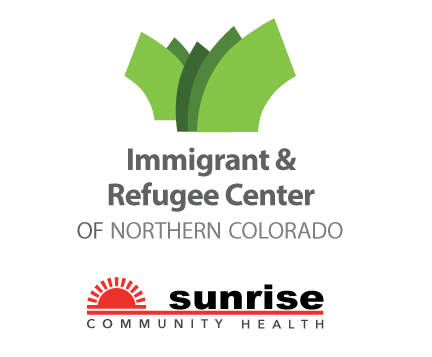Refugee 101
Is a presentation intended to inform the public about refugees, regardless of prior knowledge on the subject. The presentation is intended to separate myth from fact and to inform viewers of the trends in refugee resettlement, what the process of resettlement looks like, and about ways folks here in Northern Colorado can get involved in helping people with refugee status in their home town.
Below is a video version of the presentation led by Collin Cannon, IRCNOCO’s former Director of Advocacy.
The Scale of the Problem is Unprecedented
Since the Second World War, the scale of displacement has never been so large. With over 70 million people around the world forcibly displaced, 25.9 million of whom qualify as refugees, the international community needs to come together for a sustainable solution.
Our presentation focuses on the history and the politics of displacement — what can the international community do? We also talk about ways to get involved in our community right here in Northern Colorado.
Who are we talking about when we use the term "refugee" anyway?
The term is used in lay discourse to refer to anyone seeking refuge, but this is not how the term is employed under international law. In fact, the standard against which someone's case is evaluated is a codified definition that is interpreted by the UNHCR — the international organization with the mandate to designate people as refugees. The definition for who counts as a refugee is a definition that is fraught and controversial — not for who it includes, but for who it has overlooked. Nonetheless, a refugee is defined as one who, due to:
“a well-founded fear of being persecuted for reasons of race, religion, nationality, membership of a particular social group or political opinion, is outside the country of his nationality and is unable or, owing to such fear, is unwilling to avail himself of the protection of that country; or who, not having a nationality and being outside the country of his former habitual residence as a result of such events, is unable or, owing to such fear, is unwilling to return to it.”
What stands out in this standard?
A refugee has a "well-founded fear of persecution"
This fear of persecution is based on that person's immutable traits: race, religion, nationality, membership with a particular social group or political opinion
This person is outside the country of his or her nationality
And this person is unable or, owing to such a fear, is unwilling to avail himself or herself to the protection of the protection of that country.
How does a refugee differ from an immigrant or an asylum seeker?
The definitions employed in international law to designate displaced people or people on the move are specific in their application. Nonetheless, there are many who challenge the decisions made about who qualifies as either a refugee, immigrant, or asylum seeker, as the benefits afforded each group are so different.
The operative distinction between immigrants and refugees is that the former group are seen, under international law, as having a choice in leaving the country of his or her nationality. Refugees, conversely, are those who do not have a choice.
While this definition may make sense from a distance, up close many issues can arise. What about people who legitimately have a fear of immanent violence, believe they will not be protected by their home government, but who are not granted status as a refugee? An example of this can be many of the undocumented immigrants coming into the United States across our southern border: many fear immanent violence back home and feel as though they have no other options but to leave, and yet they are not being granted asylum status from UNHCR. Why is this? Can these people be considered asylum seekers? How does American hegemony implicate this question and the role of international organizations? Are international organizations autonomous or extensions of great powers? These debates continue in academia, and these questions are raised in the Refugee 101 presentation.
The operative distinction between asylum seekers and refugees is where the individual is seeking protected status. A refugee, once across the border of his or her home country, will arrive into a "second country," which is to say a territory where the person seeks protection but does not intend to stay indefinitely. Rather, a person might seek to be resettled into a "third country," meaning a place where he or she intends to stay.
Asylum seekers, on the other hand, arrive at the port of entry to their intended "third country" and declare their case to the authorities of that country. For example, someone might purchase a plane ticket from another country, fly to the United States, and request asylum at our port of entry or customs.
The distinction of importance is location.
How many people with refugee status are resettled to the United States annually?
What is the economic impact of refugee resettlement on Colorado?
Colorado gains:
Tax revenue & local economic spending because of our participation in refugee resettlement.
Barriers to Integration (Seen & Unseen)
in the United States
Social integration is a process rooted in reciprocity: each new group shares something of cultural importance with the receiving community, just as the receiving community shares something back. To allow this process to be successful, however, certain barriers to integration need to be mitigated. Achieving this equality of opportunity or equality of access is not easy, though, and many barriers remain rigidly enforced and seldom penetrated.
Below is a presentation offered by our Director of Advocacy and Community Navigation team discussing some of the various barriers—seen and unseen—to integration that exist for many of our newcomer communities.













